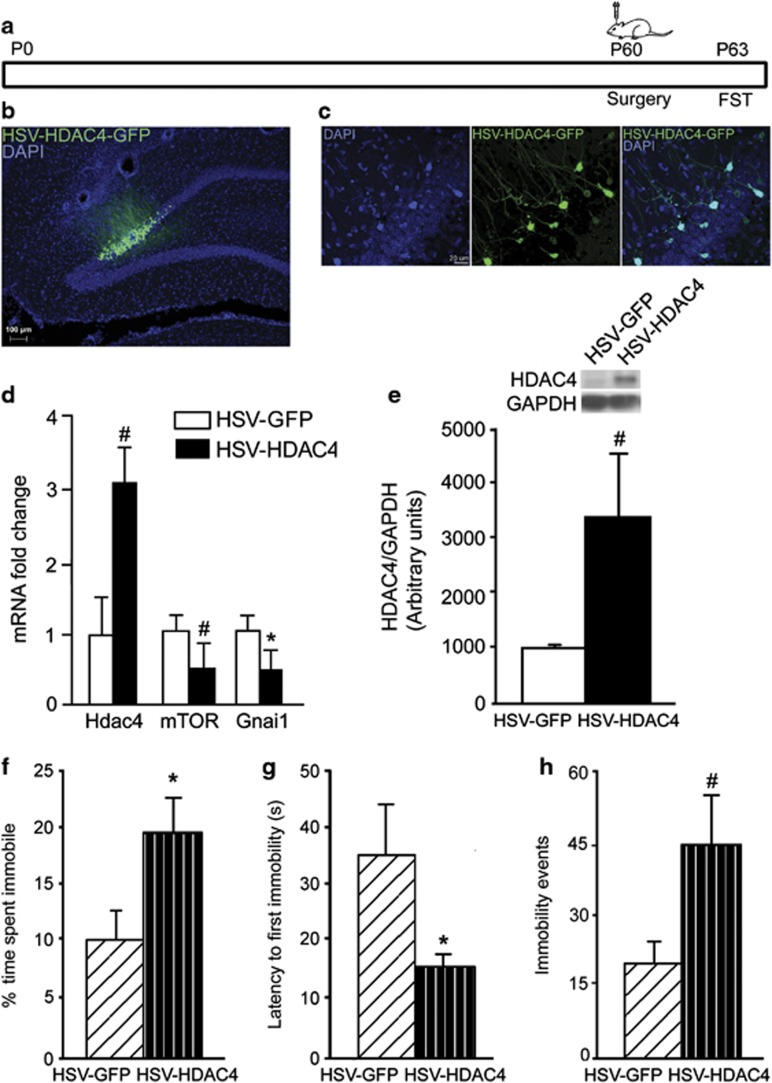Figure 5.
Hippocampal histone deacetylase-4 (Hdac4) overexpression in adulthood evokes depression-like behavior. Shown is the schematic for the experimental paradigm (a) wherein adult rats received bilateral stereotactic injections into the hippocampus of bicistronic construct HSV-HDAC4-GFP or HSV-GFP and were subjected to the forced swim test (FST). Shown are representative images for HSV-HDAC4-GFP (green) and DAPI (blue) expression in the hippocampus (b) and GFP-DAPI colocalization in the dentate gyrus (c). Quantitative PCR (qPCR) and western analysis confirmed HDAC4 overexpression with a trend noted toward significance in the qPCR (p=0.07; d) and western blot results (p=0.062; e). HDAC4 overexpression resulted in a significant decline in guanine nucleotide-binding protein alpha inhibiting 1 (Gnai1) expression and a strong trend (p=0.051) for a decline in mammalian target of rapamycin (mTOR) expression. HDAC4 overexpression significantly increased percent immobility time (f) and reduced latency to the first immobility event (g) in the FST. A strong trend (p=0.07) toward increase in the number of immobility events was noted in HDAC4-GFP-overexpressing animals (e). Data are the mean±SEM (n=6–7 animals per group for behavioral studies; n=4 for qPCR and western blot analysis). *p<0.05, #p<0.10 as compared with HSV-GFP (Student's t-test).

